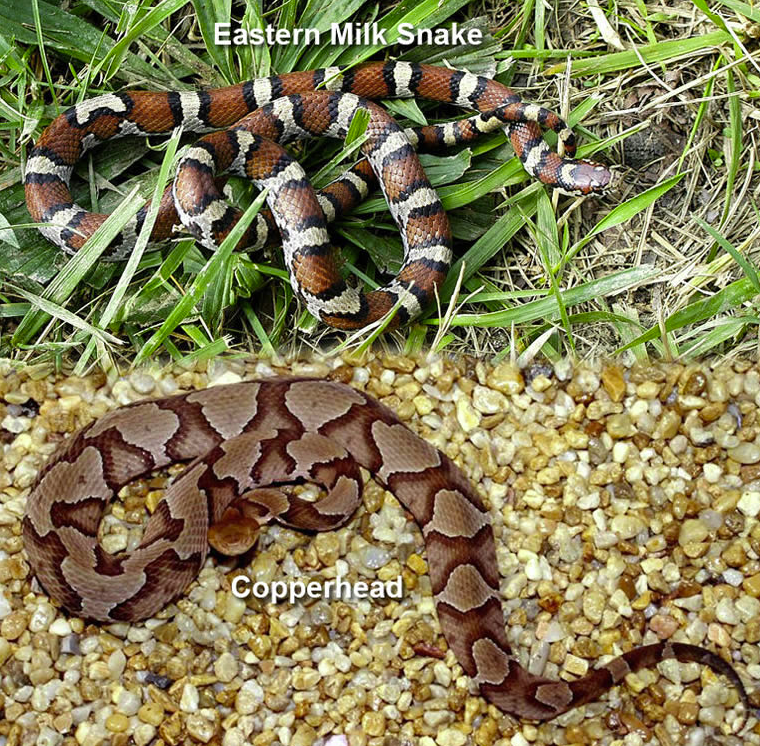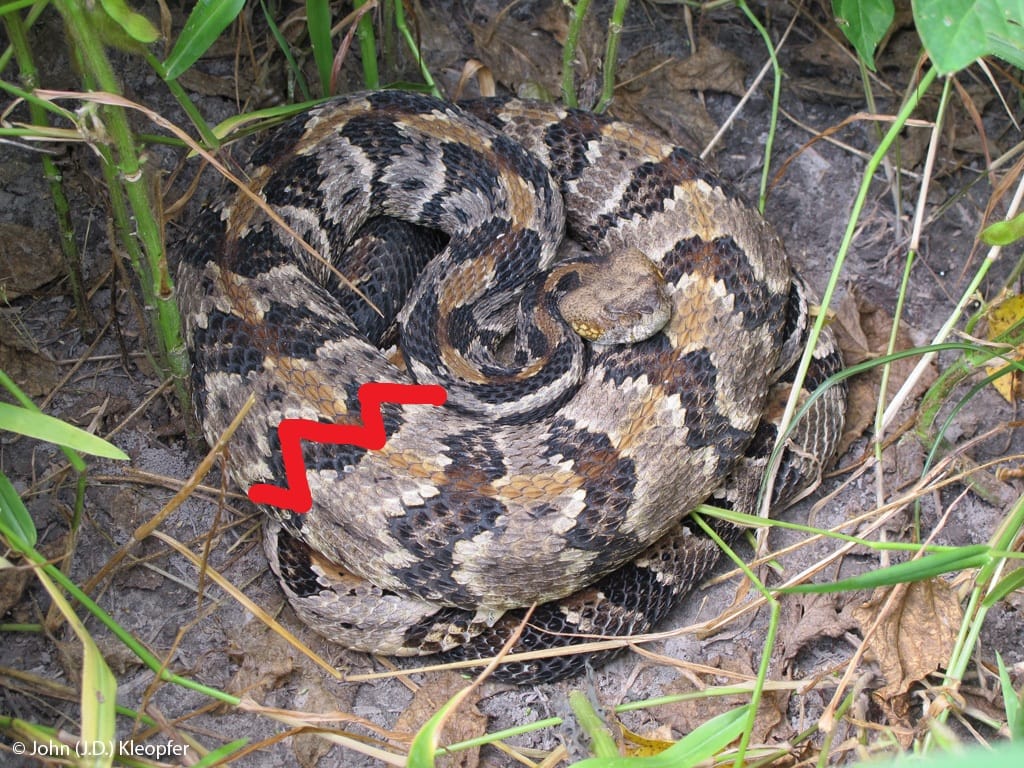Navigating baby snake season in Floyd
Arianna Kuhn, president of the Virginia Herpetological Society, who also works as a Research Scientist and Curator of Herpetology, said that “copperheads are special: these snakes give birth to live young."

In Floyd County, we are still in a season that not many people look forward to: baby snakes season, which means that snakes of all types have both hatched from eggs or live birth and are now on the move.
The weather is still warm, and snakes are active during the day. Most snakes are currently looking for a good place to spend the winter months. Those orange, yellow, and brown leaves newly fallen on the ground are a perfect camouflage for some native snakes to be roaming around in.
Arianna Kuhn, president of the Virginia Herpetological Society, who also works as a Research Scientist and Curator of Herpetology, said that “copperheads are special: these snakes give birth to live young. These babies can be born throughout late-summer into fall, but especially between August and October, depending on temperatures."
"Baby copperheads are tiny — they are only about 10 inches long with a bright green or yellow tail tip and distinct "Hershey kiss" pattern along the back,” Kuhn said.

Timber Rattlesnakes are in Appalachia as well. Because of extreme habitat loss and the killing of these creatures, Kuhn said that Timber Rattlesnakes now have a “very small and threatened population in the southeast.” She specified that “in late-summer and early-fall, timber rattlesnakes, just like copperheads, give birth to live young" so it is still important to use caution in areas that might have snakes lurking about.
There are less snake bites in the winter months because snakes are cold blooded and hibernate. Their low activity, and humans' lowered outdoor activity causes us to not have much contact with them.
Blue Mountain School is now accepting enrollment in our Early Childhood classes, ages 2 1/2 through first grade! To schedule a tour visit our website or contact the school at contact@bluemountainschool.net or by phone: 540-745-4234
Although snakes can be anywhere, knowing where they might likely be is a good first step, and making sure you can see them is another. Kuhn suggests that, to avoid encountering snakes or disturbing their native habitat, “stay on designated trails when walking in the woods." If moving large covered objects that have been in place for a while, like a wood pile, or debris in forests and fields, “use equipment, such as tongs, to move these objects instead of using your bare hands. And if you do see a snake, leave it alone. These animals are fairly secretive, and often just passing by or basking in a warm area (such as a paved path) and will likely move on. Engaging with the animal increases risk of being bitten. You can also clear areas on properties such as trash piles where animals like snakes like to shelter.” Wearing leather gloves, and boots will offer additional protection when working or walking outdoors.
Although many people like having snakes roaming their property for control of bugs, and mice, not everyone is quite so thrilled to have snakes around crossing their paths. They are known to strike fear in the hearts of millions worldwide. Thankfully, if you see a snake that is not a welcomed guest, Free Snake Relocation is available to the public to help with both venomous and non-venomous snakes. As of Nov. 4, there are two volunteers registered out of Pulaski and one out of Martinsville.
Andrew Blevins
210 N Locust Street
Floyd, VA 24091-2105
(540) 745-2777
Next to School House Fabrics on Route 8 in the Town of Floyd.
Learning to identify the snakes that can harm us can also help keep your and your family safe. As Kuhn mentioned, the pit-viper copperhead is identifiable with its brown body and a darker outside "Hershey kiss"-shaped pattern from the side view. When the copperhead is viewed from the top, the pattern can look more like an hourglass.
The Timber Rattlesnake can range from light beige to dark brown, grey, or reddish brick coloring with dark zig-zag or “chevron” pattern running across its back all the way from its head to tail. The tail will have the well-known “rattle” in older snakes from left over pieces of unshed skin.

According to the World Animal Foundation more than 7,000 people are bit each year by venomous snakes in the U.S., and Virginia is the state with the 5th most venomous snake bites, with a Bite Rate of 48.7 per million. But because of medical advancements, those numbers result in a much smaller number of an average of five deaths per year.
Virginia is home to over different 30 snake species. Luckily, most are non-venomous. We have only three species of venomous snakes: copperhead, the Timber Rattlesnake, and the Cottonmouth (which is found is Southeastern Virginia).
Kuhn recommends the Virginia Herpetological Society's Website to learn how to properly identify venomous versus harmless snakes.
There are additional harmless snakes that do have a slightly mild venom that can cause an irritation when bitten, for example the ringneck, the garter snake, and the hognose. It is important that when bitten by any animal, including non-venomous snakes, to wash the area thoroughly with soap and water as soon as possible.

Troika Crafts is Southwest Virginia’s premier showcase of local and regional fine craft.
Find us at 203 S. Locust Street in The Station.
Learn more www.troikacrafts.com.
National Snakebite Support is a nationally recognized resource that provides guides to assist when both people and pets are bitten by venomous snakes. There are no effective home remedies.
According to the experts at National Snakebite Support, do not cut, suck, use extraction devices, or apply a tourniquet to any snakebite. The most important steps following a bite are the following:
- Arrange to get to the hospital as quickly as possible. That may mean calling a friend or 911. Definitely call 911 for any serious symptoms. Do not drive yourself.
- Remove any constrictive clothing and jewelry.
- Elevate the affected extremity to reduce swelling, Absolutely DO NOT place the affected extremity below heart level.
- Take a picture of the snake IF YOU CAN DO IT QUICKLY AND SAFELY. It is helpful but not necessary. DO NOT bring the snake, whether dead or alive.
- Do NOT do any of the following: tourniquets, lymphatic bandage, pressure immobilization, cut and suck, extraction device, electrical stimulation, packing the extremity in ice.”
Kuhn points out that the anti-venom that is appropriate for the pit viper species (known as "Crofab") is carried at most hospitals. Although not on the list, both Carillion and LewisGale in Christiansburg said that they could get the anti-venom.
CroFab and Anavip are both FDA-approved to treat all North American pit vipers. If bitten, calling the receiving hospital to confirm that they have the anti-venom is a good idea, but it should not delay seeking treatment.
For anyone interested in learning more about reptiles and amphibians, such as how to identify them, the Virginia Herpetological Society is a great place to start.


